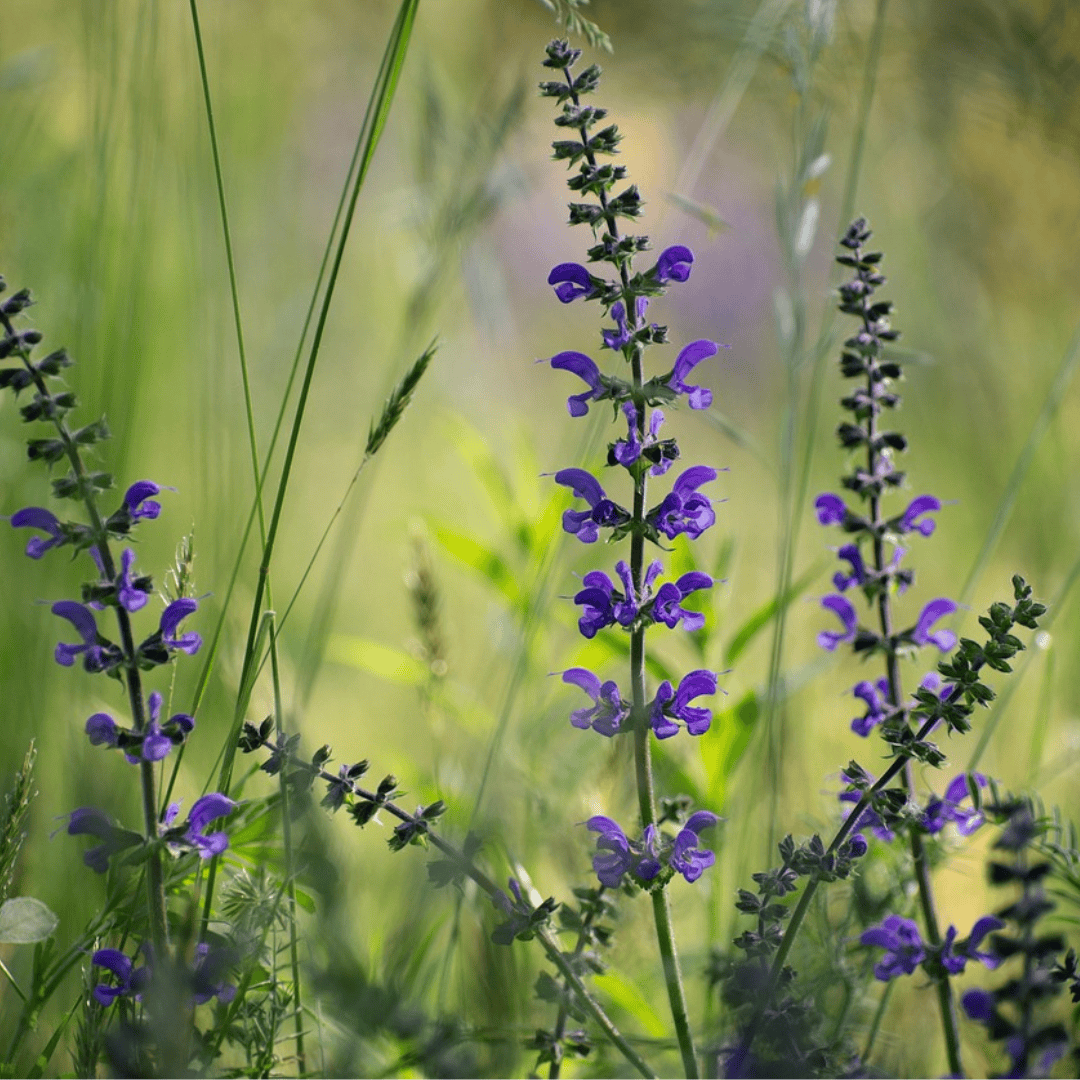



A herb of vision and intoxication, clary sage carries a herbaceous aroma with delicate floral notes, balanced by hints of earthiness, spice, and muskiness.

%20(2).png)

Clary sage, or Salvia sclarea, is native to the Mediterranean region and to certain areas of north Africa and central Asia, thriving in warm, dry climates. Its name is derived from the Latin “clarius,” meaning “clear,” a reference to its ancient use as an eye tonic.
Clary seeds have a mucilaginous coat, once used to remove foreign objects from the eye, a practice noted by Nicholas Culpeper in Complete Herbal (1653), who called the plant "clear-eye." Today, it is cultivated in various regions, including Europe, North America, and parts of Asia. The plant flourishes at higher altitudes, with the leaves and flowers harvested in late spring.

Clary sage’s history dates back to the ancient Greeks, Romans and Egyptians, who prized it for its medicinal benefits, particularly its ability to ease digestive issues and promote relaxation. The herb was later used by medieval apothecaries as a treatment for everything from headaches to poor eyesight.
German merchants flavored Rhine wine with clary and elder flowers to mimic muscatel, a practice so widespread that the herb became known as Muskateller Salbei in German and muscatel sage in English. Matthias de Lobel, a 17th-century Flemish physician and botanist, wrote: “Some brewers of Ale and Beere doe put it into their drinke to make it more heady, fit to please drunkards, who thereby, according to their several dispositions, become either dead drunke, or foolish drunke, or made drunke.”
It wasn’t until the 19th century that its use expanded into the world of perfumery. By the 20th century, clary sage became a staple in both traditional and modern fragrance formulations.

Clary sage has a herbaceous scent with a smooth, almost velvety quality. It carries a sweet, floral undertone with hints of earthiness and spice. Its soft greenness is balanced by an underlying nuttiness. There’s something comforting about it, a balanced freshness that’s not too harsh.

Whether it’s the scent of a hand-crushed leaf on your fingers after brushing past a garden bed, or the faint herbal trace in an old apothecary drawer, our memories of clary sage evoke peace of mind and expansion. A sacred herb for the Romans, Salvia sclarea, uplifts, offers emotional comfort, and grounds the spirit.

Clary sage has long been used in aromatherapy for its mood-balancing properties and is believed to have a calming effect on the mind and body, as well as contributing to sleep quality. Use a diffuser with a few drops of clary sage essential oil to create a peaceful atmosphere at home or in your office. Drink clary sage tea before bed to slow down the pace and get into a quiet nocturnal mood. Clary sage can be a perfect companion for meditation, relaxation, or self-care rituals, but it can also energise you during the day. If you’re looking for a clary sage forward scent, try L’Eau Serge Lutens, Erawan by Parfums Dusita or Salvia Sclarea by Tom Daxon.

Bergamot, lavender, rosemary, geranium, mint, basil, cardamom, sandalwood, cedarwood, pine, labdanum, frankincense

Clary sage essential oil is most commonly obtained through steam distillation, but an absolute can also be created through solvent extraction. While the essential oil is pourable and of a clear colour, with lavender, grassy and warm musk undertones, the absolute is a solid brownish green mass, with a sweet, herbaceous, floral aroma with woody, amber and tea facets.
Clary sage is a versatile heart note that’s frequently paired with other calming ingredients. It works particularly well with citrus notes, woody accords, and florals, offering an aromatic contrast that enriches the overall composition. It is often seen in fragrances designed to evoke a sense of wellness, such as unisex, natural or fresh perfumes, like Cowboy Grass by DS&Durga and LoneStar Memories by Tauer.

The key aromatic compounds in clary sage essential oil include linalyl acetate, linalool, terpineol, geraniol, nerol and sclareol. Linalyl acetate contributes to the soft, sweet floral nature, while linalool adds the herbaceous, fresh quality. Terpineol has a clean floral-lilac scent with a dirty note.
Geraniol is a sweet, floral-rose scent, while nerol is similar, but fresher. Sclareol, a compound unique to clary sage, gives the scent its earthy character and helps enhance the longevity of the fragrance. Sclareol is also the source for Ambroxan, a synthetic Ambergris material that is widely used by perfumers.Synthetic versions of clary sage typically focus on recreating and associating these key components, but clary sage is often used in its natural form.